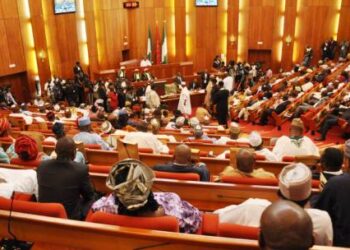Mixed reactions greeted the foreign exchange (forex) market last week, even as the foreign reserve, a measure of strength of the local currency and trade, advanced 2.2 per cent to $35.7 billion last week from the $34.9 billion it stood the previous week.
Of course, the good news about the foreign reserves is as a result of the bullishness of oil prices.
Last week, oil prices sustained its bullish momentum, up 6.9 per cent week-on-week (w/w) to $34.75bbl. However, on Friday, oil prices moderated due to doubts over the strength of China’s economic recovery and rising tensions between Washington and Beijing. In spite of all that, the external reserves further advanced, up 2.2 per cent ($755.0m) to $35.7 billion from $34.9 billion last week.
The Central Bank of Nigeria (CBN) spot rate traded flat all week to close at N361.00/$. At the parallel market, the exchange rates opened at ₦455.00/$1.00 and closed at N460.00/$, depreciating N5.00kobo w/w. At the Investors’ & Exporters’ (I&E) Window, the NAFEX rate opened at N387.10/$ and closed at N385.94/ $ on Friday, appreciating N0.06kobo w/w from N386.00/$ in the prior week. Activity level in I&E Window rose 7.5 per cent to $175.6 million from $163.3 million recorded in the previous week.
At the FMDQ Securities Exchange (SE) FX Futures Contract Market, the total value of open contracts of the Naira settled at $15.5 billion, up $96.7 million (+0.6 per cent) from $15.4 billion in the prior week. The MAY 2021 instrument (contract price: N423.06) received the most buying interest in the week with additional subscription of $25.6 million which took total value to $255.1 million. On the other hand, the MAY 2020 instrument (contract price: N389.70) received sell-offs worth $3.5 million bringing the total value to $2.5 billion. We expect stronger forex demand due to the easing of lockdown across major economies to put pressure on the exchange rate in the near term.
Treasury bills
The treasury bills instruments sustained its bullish run last week. The Open Buy Back )OBB) and Overnight (OVN) rates opened this week lower at 1.83 per cent and 2.33 per cent respectively, from 2.80 per cent and 3.40 per cent at the end of the previous week as system liquidity rose to N590.7 billion from N423.2 billion. Despite the moderation in system liquidity to N497.3 billion on Wednesday, the OBB and OVN rates decreased to 1.67 per cent and 2.17 per cent respectively from 1.90 per cent and 2.30 per cent on Tuesday). On Thursday, the OBB and OVN rates trended lower to 1.42 per cent and 2.00 per cent respectively as system liquidity rose to N539.4 billion. Lastly, OBB and OVN rates jumped to close the week at 15.00 per cent and 15.63 per cent respectively while system liquidity increased to N567.3 billion.
At the treasury bills secondary market, investors recorded gains as average yield moderated 24 basis points )bps) to settle at 2.14 per cent. Across all instruments, the 91-day note recorded the strongest buying interest with its yield dropping 60bps to 1.34 per cent.
Meanwhile, there was also buying interest in the 182 and 364 days assets respectively as their respective yield fell to 2.10 per cent and 3.00 per cent respectively from the previous week’s close of 2.16 per cent and 3.07 per cent.
“In the coming week, we expect money market rates to trend lower especially as maturing Open Market Operation (OMO) instrument worth N305.7 billion is expected to hit the market, supporting high system liquidity”, said analysts at Afrinvest..
Bonds market
Last week, performance in the secondary market was bullish as average yield declined 16bps w/w to 10.4 per cent. The week began on a bullish note with yields declining on the first 3 days of the week while performance was bearish on Thursday following the opening of the FGN Sukuk bond. Across tenors, the short-term bonds recorded the most subscription with yields down 30bps w/w. Similarly, the mid and long term instruments recorded 12bps and 10bps decline in yields respectively.
The Debt Management Office (DMO) conducted a bond auction offering instruments worth N60.0 billion on Wednesday with an equal split among the 3-year, 15-year and 30-year instruments. Due to the high system liquidity level, the instruments recorded massive subscriptions. The longer-dated instrument had the most subscription at 9.5x while the mid-term and shorter-dated assets recorded bid to cover ratios of 7.7x and 4.1x respectively. A total of N296.2 billion was allotted (3 years: N67.4 billion, 15 years: N68.7 billion and 30 years: N160.1 billion) while the closing rates were 9.2 per cent, 11.7 per cent and 12.6 per cent for the 3-year, 15-year and 30-year instruments respectively.
On Thursday, the DMO offered a N150.0 billion 7-year FGN Sukuk bond at a rental rate of 11.7 per cent which is payable half yearly. Although subscription is scheduled to close on June 2, 2020, analysts expect oversubscription due to elevated system liquidity at N1.2 trillion and the fact that the bond’s rental rate stands at a premium to the current FGN’s 2027 instrument at 10.7 per cent.
At the SSA Eurobond market, bullish sentiment persisted with all instruments under our coverage recording gains while average yields declined 1.1ppts to 10.6 per cent. The Zambian 2024 and 2022 instruments enjoyed the highest demand, shedding 2.5ppts and 2.0ppts respectively. Similarly, the Ghanaian 2026 and Nigerian 2022 instruments recorded gains and yields declined 1.9ppts and 1.8ppts respectively.
For the African Corporate Eurobonds that we track, performance was bullish as average yields declined 60bps w/w to 8.0 per cent. The ESKOM HOLDINGS 2021 and UBA 2022 instruments led the pack with yields declining 2.5ppts and 2.2ppts w/w respectively. On the other hand, the BAYPORT MANAGEMENT 2022 and OFFICE CHERIFIEN 2025 led the laggards with yields up 11bps and 2bps w/w respectively. In the coming week, we expect bullish performance to be sustained in the domestic market on the back of high system liquidity. At the Eurobonds market, we expect sustained bullish performance due to rising commodity prices.
Money Graphs




